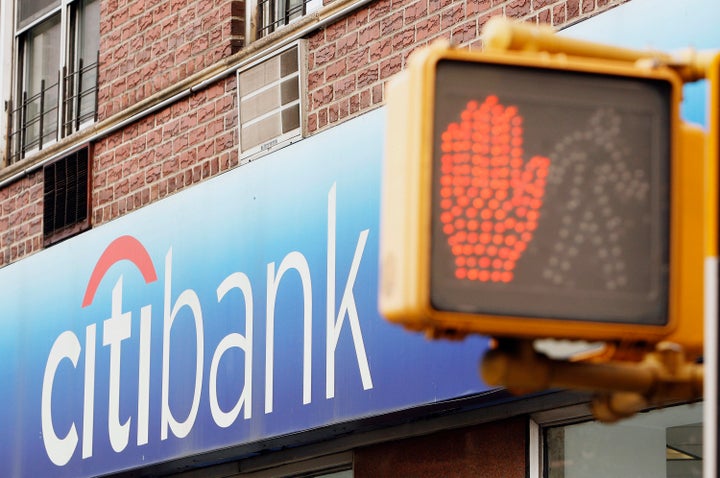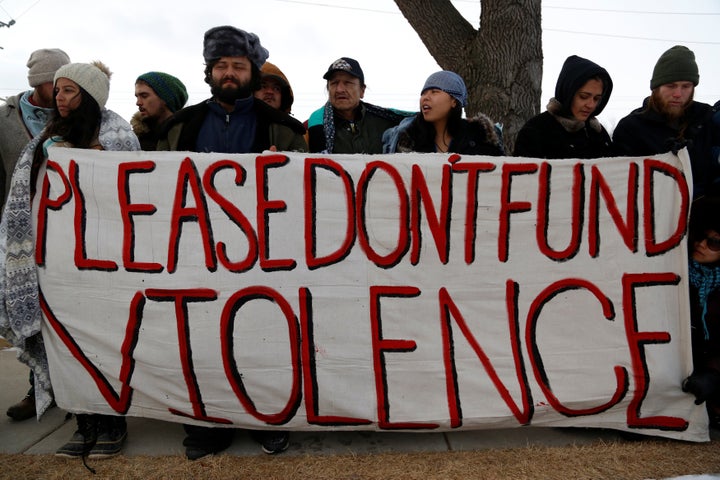
Trinity Tran is a powerful speaker. Addressing a rally in downtown Los Angeles for New York congressional nominee Alexandria Ocasio-Cortez, the 33-year-old activist and organizer thundered, “We are witnessing the emergence of a solution, from profit and greed to collective prosperity. We can empower our community from the ground up. It’s time to take our power back.”
Tran’s organization, Public Bank LA, is leading the revival of an idea that had largely been discarded until the financial crisis. In November, Los Angeles voters will have the opportunity to approve a public bank for the city. If the measure passes, it would become the first government-owned bank developed in the United States since 1919.
The term “public bank” may confuse some into thinking that Los Angeles is about to create a bunch of branch offices where residents can open a free checking account. The idea is much more ambitious. Public bank enthusiasts want to finance local improvements in housing, infrastructure, and community development by employing the money citizens already pay to state and local governments for services. To them, it’s about democratizing the financial system.
The public has yet to be brought in on this idea, until now at least. The Los Angeles vote represents the first popular referendum on public banking since the financial crisis brought the public bank idea back into the conversation. For the vote to go their way, activists will have to demystify a technical financial concept, and answer charges from critics that a city-owned bank will prove too risky and too costly for taxpayers.
The activists say they’re ready for the challenge. “Until now, activists have been fighting in the ivory towers of legislatures, and off the radar of the populace, even though it’s in their best interest,” said Phoenix Goodman, an organizer with Public Bank LA. “We have the opportunity to bring this down to the grassroots, where it belongs.”
If you live in a city, anytime you buy something that includes sales tax, pay a parking ticket, swipe your transit card or renew a business license, money goes to the city treasury. It doesn’t immediately fly back out into the paycheck of a police officer or schoolteacher. All state and municipal governments have cash reserves they hang onto. The numbers are significant; Los Angeles has a current portfolio of close to $10 billion.
Cities and states typically store this short-term cash in bank accounts or plain-vanilla investments. Big banks like Wells Fargo or JPMorgan Chase use the funds to generate profits, through loans or trades, or whatever else they can conjure. They, for example, fund private prisons that house immigrant families. They fund pipelines that carry fossil fuels and are displacing Indigenous Americans from their land. And big banks continue to act badly with relative impunity ― wrist-slap fines ultimately paid by shareholders, and no executive seeing the inside of a jail cell.
Divestment activists have demanded that cities abandon big banks, with some success. In Los Angeles, activists won a separation from Wells Fargo, holder of $101 million in city bank deposits. But they soon discovered that the alternative to Wells Fargo is just another Wall Street giant. Community banks and credit unions lack capacity and often face legal hurdles and onerous collateral requirements to handle public funds.
“We knew divestment from one big bank to another predatory bank was unsustainable,” said Tran, who led the divestment movement in Los Angeles. Soon after, Tran co-founded Public Bank LA, which demanded a city-owned institution to keep government revenues out of Wall Street’s hands. A public bank could use those dollars as a deposit base, she argued, funding loans within the community for local public works projects, small businesses, or affordable housing.
These needs are critically unmet at the local level. Banks are reluctant to finance projects with a perceived risk, like affordable housing, and private investors don’t see the return on investment in replacing water pipes. If a city or state wants to fund something big, they usually turn to either the municipal bond market ― a $3.8-trillion financial industry giant that adds significant lifetime interest costs, or public-private partnerships with investors who have a profit motive at heart.
Because a public bank is not a for-profit business, it can offer lower interest rates than private options, saving billions of dollars over time. And because the city owns the bank, any interest income would flow back into its coffers. That reduces financing costs and facilitates more lending. Plus, the money stays at home, circulating in the local economy rather than traveling into an investor’s pockets or a risky trading scheme.
This may sound like it came out of a late-night college dorm brainstorm session, but public banking is used routinely around the world, including in one of the reddest U.S. states. The Bank of North Dakota, established in 1919 by progressive farmers seeking independence from big banks, makes loans throughout the state and partners with community banks on larger projects. It doesn’t lend out state deposits. But like all banks, it creates new money by extending credit, with deposits balancing the books. Public banks, then, expand the money supply available for economic development, and keep that money circulating where it was created.
The Bank of North Dakota has earned profits for 14 straight years, during the Great Recession and North Dakota’s more recent downturn from a collapse in oil prices, according to its 2017 annual report. Moreover, it supports the most vibrant community bank network in the country, with more branches and higher lending totals per capita than any other state. No North Dakota bank failed during the financial crisis.
North Dakota’s public bank has faced criticism, however, for investments supporting fossil fuels. A bank controlled by a California city won’t necessarily share the same lending portfolio.

“We want to create a bank that is answerable to one shareholder: the public,” said David Jette of Public Bank LA. “San Francisco and Oakland need affordable housing, Los Angeles needs more transportation infrastructure. These are things a public bank can do.” The Los Angeles City Council, recognizing a potentially cheaper way to finance city improvements, certainly got the message. Led by council President Herb Wesson, council members unanimously passed the initiative to put the public bank vote on the November ballot.
But the challenges to establishing a new public bank are significant. A Los Angeles chief legislative analyst report released in February stated that the city charter would need to be amended to accommodate a public bank. That’s what the ballot initiative would execute. The report also said that state and federal law would need to change as well, and that the city would need to apply for a state bank charter, come up with collateral and insurance to protect deposits, and provide startup funds to capitalize the bank and hire administrative staff.
“There is substantial cost and risk associated with operating a public bank,” said Beth Mills, a spokeswoman for the Western Bankers Association, a trade association and a leading opponent of the ballot measure. “Presumably the bank would be capitalized with taxpayers dollars. How would any losses resulting from loan defaults be paid at a public bank ― would taxpayer dollars be at risk?” Mills added that any savings from financing would be wiped out by the expense of hiring attorneys, compliance officers and consultants.
As well as money from deposits, a public bank would need additional capital, which could be used to cover losses if they arise. That could come from a municipal bond offering or public pension investments. In effect, outside investors would be lending to the public bank and betting on its success.
Los Angeles activists are also joining forces with counterparts in six other California cities to form the California Public Banking Alliance, which would work with the state to develop a standard license and a framework for regulating public banks. “We want to build a network of banks to be interdependent and support one another,” said Jette. “Los Angeles is a great place to test this out on a voting public.”
Even if the vote passes and all goes smoothly, a public bank in Los Angeles would still be years away. But if it works, the public banking concept has revolutionary potential. It could employ constituent deposits for the public good. It offers an escape valve for city officials to revitalize neighborhoods without necessarily having to raise taxes. And to the activists, it reimagines the role of finance as more than just a profit-seeking beast.
“Simply by founding a public-owned institution based on public needs, you bend the course of financial history toward regular people,” said Jette. “We can control our own financial fate. And if we win this, we will take that everywhere.”
For more content and to be part of the “This New World” community, follow our Facebook page.
HuffPost’s “This New World” series is funded by Partners for a New Economy and the Kendeda Fund. All content is editorially independent, with no influence or input from the foundations. If you have an idea or tip for the editorial series, send an email to thisnewworld@huffpost.com
